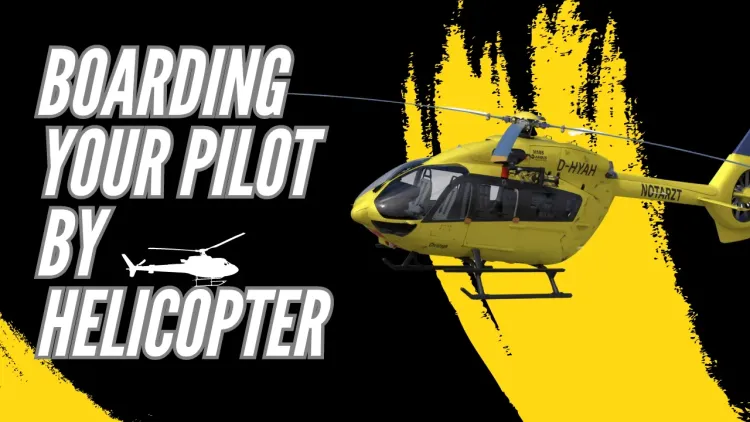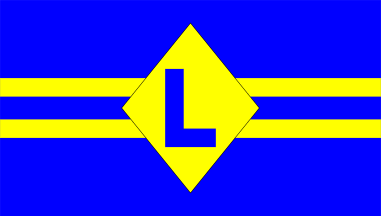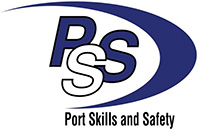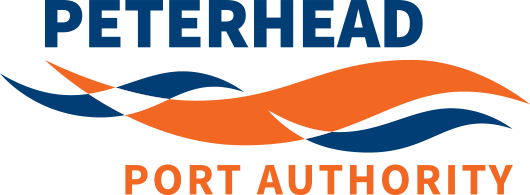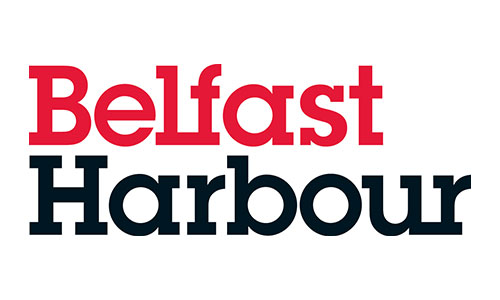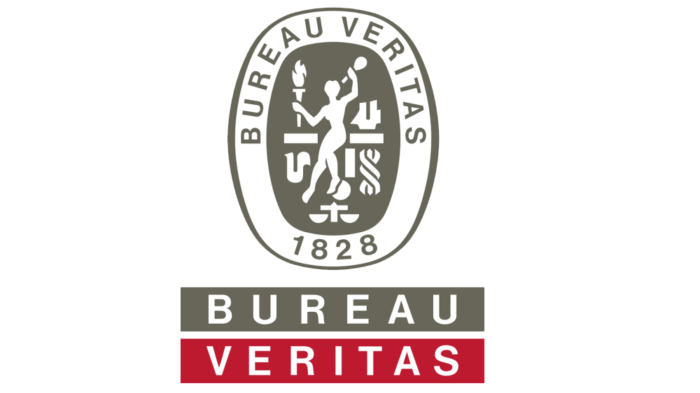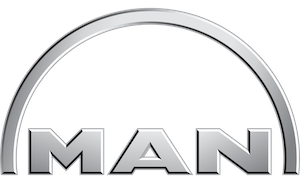Maritime Pilots Boarding By Helicopter
Maritime pilot don't just come by pilot boat, increasing number of ports are using the speed and operational flexibility of helicopter pilot boardings to streamiline their piloatge service. Pilot services in Australia, South Africa, France, Belgium, The Netherlands and USA are turning to helicopters to get their maritime pilots safely on and off visiting vessels.
Helicopter boardings have a different set of inherrent risks than pilot boat boarding and just as with pilot ladder boarding, the risks involved with helicopter pilot boarding need to be assessed, understood and as far as possible mitigated.
Helicopter operations involving ships are a critical component of maritime activities, particularly for tasks such as transferring pilots, conducting medical evacuations, or delivering supplies. The International Chamber of Shipping (ICS) Guide to Helicopter/Ship Operations serves as a comprehensive framework for ensuring the safety and efficiency of these operations. This article will delve into the key aspects of helicopter safety in ship operations, drawing from the ICS guide’s principles and recommendations.

Safety as a Paramount Concern
The ICS guide underscores that the safety of the ship, helicopter, and personnel involved is paramount. Before any helicopter operation is initiated, a detailed report specifying the operational requirements must be available. This ensures that the chosen helicopter and operator are suitable for the task at hand, thereby maintaining high safety standards and cost-effectiveness.
Provision of Landing/Operating Area Information
Most ships are not designed with helicopter operations in mind, making the provision of accurate and detailed information about the landing or operating area essential. Operating areas can be on top of hatches, on the aft end of a vessel or require winching into confined spaces such as bridge wings. The ICS guide recommends that ships prepare and complete helicopter operating area templates, which include details such as obstructions, dimensions, and photographs of the area. These templates should be readily available for transmission to the aviation operator when arranging a task.
Risk Assessment and Management
While helicopter transfers can be safer and more efficient than boat transfers, they are not without risks. It is incumbent upon shipowners and helicopter operators to conduct individual risk assessments to determine if operations can meet the standards specified in their Safety Management Systems. These assessments should consider factors such as language skills, communication capabilities, and environmental conditions. Ensuring the crew are fully briefed, that roles have been assigned and understood and that everyone is aware of their responsibility in an emergency are paramount to safe operation.
Principles of Operating Safety
The guide sets forth general principles for maintaining safety standards during marine helicopter operations. It emphasizes the importance of a clear understanding of safety requirements for both the ship and the aircraft. Minimum requirements are specified to ensure that routine operations are conducted safely. For helicopter/ship operations, the use of twin-engined helicopters is always preferred. Some national regulations may even stipulate their use or limit single-engine helicopters to winching operations and/or use in favorable weather conditions. The rationale behind this preference is the increased reliability and safety margin provided by having two engines.
Communication is Key
Effective communication is vital for the successful conduct of safe helicopter operations. As with the maritime world the standard language used for aviation is English. All parties involved must understand their responsibilities and agree on a clear and simple plan of arrangements both prior to and during operations. This includes the ship’s master and the helicopter operator/pilot. Being prepared for the type of questions a helicopter pilot will need to ask can help non-native English speaker to be better prepared with pre-formatted responses that ensure clear unambiguous and concise communications.
Flying Object Danger
When helicopters come into land, take-off or hover they can generate significant amounts of downdraft. The effect of this can be to force unsecured objects into the air. These fylying objects can pose a severe danger to the frigile helicopter blades, engine intakes and cockpit glass. Prior to any helicopter operation it is essential that a full sweep is made of the upper deck to ensure loose items are secured or removed and that any cargo residue, water, ice or snow is fully removed from the deck area.
Marine Responsibilities
The ship operator is responsible for selecting a reputable helicopter operator, ensuring that the necessary expertise and equipment are available for safe operations. The shipping company’s operations department should issue advice and instructions on the use of the service and ensure that the ICS Guide to Helicopter/Ship Operations is available and adhered to by all staff. Insurance must be in place with the relevent P&I Club and their regulations on permitted helicopter operations observed at all times.
Operational Readiness and Queries
Before a helicopter approaches, the ship must confirm its readiness, including the status of the landing or winching area, course, speed, wind and spray conditions. Queries such as whether the ship needs to alter course or reduce speed for the operation to proceed safely are also addressed in the guide. The ship will also need to ensure all deck personnel are prepared along with the firefighting and lifesaving equipment stipulated in the guide. The rescue boat should be fully prepared with engine tested and swung out ready to launch.
Shipboard Safety Checklist
The ICS guide includes a comprehensive shipboard safety checklist for helicopter operations. This checklist covers securing loose objects, ensuring clear communication, and confirming that all preparations have been made for the operation. For the majority of pilotage operations by helicopter there is no need for much direct involvement from the ships crew. The pilot will be familiar with safely exiting or approaching the aircraft or in winching operations. It is however essential that a responsible officer is available to give a simple thumbs up or thumbs down to indicate to the aircraft if things are good or not and that the wave off signal is given should there be any issues with the intended helicopter operation.
In conclusion, the ICS Guide to Helicopter/Ship Operations provides a robust framework for conducting safe and efficient helicopter operations in the maritime environment. By adhering to the principles and recommendations outlined in the guide, ship operators and helicopter crews can minimize risks and ensure the safety of all involved. The guide’s emphasis on preparation, communication, and adherence to safety standards serves as a testament to the industry’s commitment to operational excellence and the well-being of its personnel.
Fathom Safety can take some of the worry out of ship helicopter operations with our new Pilot Boarding Via Helicopter training chapter. It gives detailed 3D animation to let the crew know what to expect, how to communicate and how to behave in an emergency situation.

